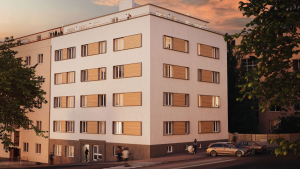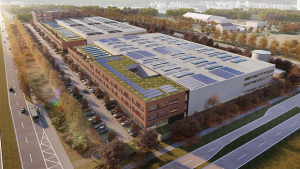
According to Savills, investment in the European real estate market is forecast to exceed last year’s level by at least 15% and reach around €270 billion in 2021, with the living sectors and logistics markets likely to account for a significantly higher proportion of total investment than their historic averages. Preliminary estimates of the investment volume in Poland after the third quarter of this year show the absolute dominance of the logistics sector.
Savills European Investment report, released this week, says that investment into income-producing living sectors will remain at unprecedented levels, supported by rising demand for rental property across all demographic groups.
A busy year of major portfolio deals in these sectors means the living and care sectors are predicted to capture almost a third of all European investment activity, while logistics will take a 20% share, Savills reported.
Eri Mitsostergiou, European research director, Savills, said: “In a low yield, low rental growth environment, capital preservation and stable, long-term income streams are sought after. Multifamily, senior housing and care homes are sectors that offer this type of security.”
Among the other significant themes for 2022 will be greater amounts of capital targeting food-anchored assets and supermarkets, as well as strong performing retail parks and warehouses.
Competition for such assets this year has pushed prices to historically low levels and they are converging with shopping centres, which are experiencing corrections across markets.
The average prime European retail warehousing yield is 5.41%. This represents a yield gap with shopping centres (at Q3 2021) of 10 basis points, and compares to a five-year average of 75 basis points. European average prime supermarket yields are around 5.38% and edging downwards.
These trends will be against a backdrop of an overall increase in cross border activity, which – boosted by an easing of COVID-19 restrictions and improved global mobility - will be slightly ahead of last year.
Savills added that investors trying to hedge against rising inflation by looking closely at their sector and geographical allocations will continue to channel capital into logistics. The sector is expected to demonstrate an above-inflation rental growth trend of >3% year-on-year across 2021 and 2022.
This trend will be most prevalent in markets where the e-commerce penetration rate is creating rapid occupier demand for logistics space, such as the Nordics, Netherlands and France and we have seen a further intensification of investor interest in these markets.
Investment demand for logistics real estate also reaches a record level in Poland, where the sector is driven not only by the growing share of e-commerce on the domestic market but also by the development of the industry in neighbouring markets, for which Poland, due to its numerous competitive advantages, has been becoming a logistics hub. According to preliminary estimates of the investment volume, after the third quarter of this year, the value of investments in the warehouse sector this year has already reached nearly EUR 1.7 billion, which accounted for over 47% of the total transaction volume.
Retail rents, by contrast, will continue to experience downward pressure, but locations with high footfall are likely to show more resilience due to greater mobility and recovery of tourism.
Capital values for core office assets will remain “keen” in 2022, with prices rising for the best-in-class assets in key markets.
Savills also expects this theme to play out in the occupier market, which will experience a continuation of demand for prime assets in good locations. The international real estate advisor reports an uptick in activity in the office leasing market, with more enquiries for space alongside an increase in the size of those requirements.
This, Savills expects, means prime CBD rents in markets with tight demand and supply conditions could also experience positive - albeit modest - rental growth in the medium term. Higher asking rents may also be linked to a premium for best in class buildings that meet the required ESG credentials.
Savills forecasts that the effect of such pressures will be to boost the secondary office sector for those landlords and investors that are willing to upgrade and refurbish properties to meet occupier’s criteria. Tactical allocations to the value-add segment will be taken by investors seeking higher returns.
Marcus Lemli, CEO of Savills Germany, said that companies that had employees returning to the office were reassessing their property requirements based on a new hybrid working model. “This is expected to intensify demand for the best-in-class office space in good locations, but also put more pressure on secondary stock for upgrading,” he added.
Prime CBD capital values are rising faster than their respective rental values in most capital cities, with the gap between the two at a historic high.
Mitsostergiou said: “We believe that the widening gap between rental and capital value growth is driven by the weight of capital targeting the limited product available that meets investor criteria; buildings with the best specifications and highest ESG credentials.”
Marek Paczuski, Deputy Director of Investment at Savills in Poland, notes that recent months have brought a revival in the office sector, which translates into an increase in investment activity in the sector.
“Changes in the functioning of offices, which were forced by the pandemic, set the directions of development for the modern office sector. The last 18 months allowed to develop effective work models and indicate the needs that a modern office should meet not only during a pandemic but also in the long term. This should stabilize the situation on the market, building a strong foundation for the office sector for the coming years. The first symptoms of the returning good sentiment for offices in the investment market are already visible, which is confirmed by the preliminary estimates of the volume of investment transactions after the third quarter of this year. at the level of over 1.2 billion euro. CEE capital becomes a substitute for domestic capital, which typically has wider purchasing capabilities when external investors are less active."



